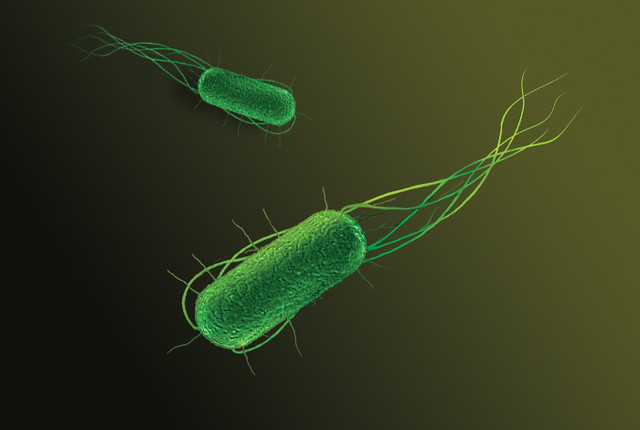 Scientists have developed stronger and easier to control Cyborg bacteria. Credit: Los Alamos National Laboratory / Flickr / CC BY-NC-ND 2.0
Scientists have developed stronger and easier to control Cyborg bacteria. Credit: Los Alamos National Laboratory / Flickr / CC BY-NC-ND 2.0Researchers have developed a new type of cell called “cyborg cells” by adding an artificial hydrogel scaffold into bacteria. These cyborg bacteria could potentially act as miniature robots in various fields, such as medicine, environmental cleanups, and industrial production. The study, published in Advanced Science, highlights the benefits of this innovative approach.
Benefits of Using Cyborg Cells For Experimentation
The addition of the artificial scaffold not only enhances the resilience of the cells but also curtails their ability to reproduce. This makes it easier to control them than genetically modified live bacteria. Additionally, cyborg cells are simpler to produce than entirely artificial cells with similar complexity.
The study co-author and synthetic biologist at the University of California, Cheemeng Tan said, “We never thought this would work.”
He further said, “When you introduce a gel matrix into cells, most of the time you would think you would kill them.” However, despite the risks his team decided to try.
Modification of Genetic Makeup of Microorganisms
Scientists often modify the genetic makeup of living microorganisms to create biological robots for specific tasks. However, microbes have evolved over billions of years to avoid risky behaviors that may harm them. This poses a challenge for synthetic biologists who need cells to perform tasks such as producing toxic chemicals or undertaking other dangerous jobs.
A synthetic biologist Kate Adamala from the University of Minnesota said, “They’re not stupid; they’re not going to do something that doesn’t make them either divide better or grow better.”
Scope of Work on Artificial and Natural Cells
Creating fully artificial cells that lack reproduction or survival instincts is an easier task compared to living cells. However, these cells are often not complex enough to perform complicated tasks. Natural cells, in terms of complexity, are superior to fully artificial cells.
Researchers have recently created “cyborg cells” by infusing live Escherichia coli cells with hydrogel, which strengthens the cells and enables them to survive toxic stressors that would typically kill E. coli cells.
UCDavisCOE: RT @AdvSciNews: This beautiful cover represents cyborg cells, semi-living entities made of a polymer matrix inside bacteria.
Cyborg cells preserve essential cell functions while gaining new abilities to resist stressors.@TanLabUCD @UCDavis… pic.twitter.com/BI3COJtrLU
— Anthony Berrington (@Envent_Eng) March 28, 2023
While cyborg cells can’t reproduce, they have normal functionality and metabolism. Genetic “circuits” and tumor cell-invading genes can also be integrated into cyborg cells.
Although hydrogels have been integrated into fully artificial cells before, controlling their components in living cells is challenging. Researchers accidentally discovered the right hydrogel but spent months perfecting the recipe to ensure bacterial survival.
Tan and Adamala believe that incorporating hydrogels into other cell types could be beneficial, as yeast, for example, can produce proteins that bacteria cannot. Tan’s team is currently focusing on programming cyborg bacteria to deliver vaccines and act as small terminators for cancer cells.

 1 year ago
128
1 year ago
128











 English (US)
English (US)